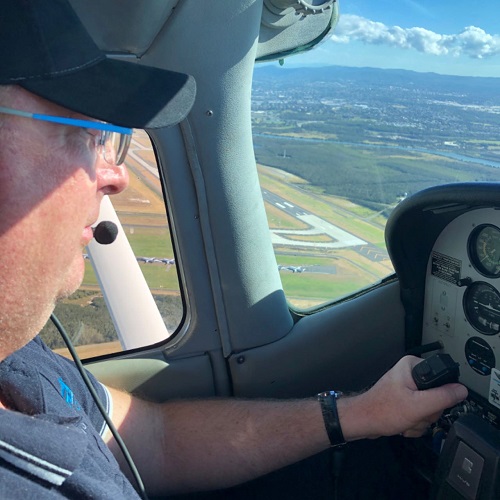09 November 2023

Red tape, over-regulation, spiralling costs and a vacuum of government policy are putting significant pressure on the general aviation sector in Australia, according to a survey of industry chiefs.
Ageing infrastructure, thin profit margins and conflicts over airspace allocation are all contributing to pessimism in the non-airline civil aviation sector that employs thousands of people.
In a new paper published this month in Case Studies on Transport Policy, aviation experts from Queensland and the University of South Australia (UniSA) outline the issues plaguing the industry, most of which come down to a lack of policy direction in aviation.
The sector includes training, aeromedical, emergency response and charter services in rural and remote communities.
Interviews conducted with the principals of 21 aviation organisations reveal that outside of regulation, the main concerns are the costs associated with operating premises and airport infrastructure.
“A user pays model to cover airport costs is having a direct impact on the sustainability of enterprises that are operating on low passenger volumes without a change in their overheads,” says lead author Dr Lucas Tisdall, CEO of Flight One Academy.
“There appears to be scant recognition of the community and economic contribution that the general aviation sector makes in Australia,” Dr Tisdall says.
Rising maintenance costs to ensure the safety of an ageing fleet of aircraft, smaller profit margins, and growing urban encroachment on airstrips, are other challenges.
UniSA Professor in Aviation Shane Zhang says the increasing popularity of drones used in a range of applications – from fire-ant mapping and fauna surveys through to real estate development and recreational photography – is also causing tensions.
“The emergence of unmanned aerial vehicles (UAVs) capable of transporting patients and passengers introduces new risks,” Prof Zhang says. “Is the automation of such transport at the expense of pilot employment, involving a major re-engineering of international safety systems, worth the cost of development?” he asks.
Aviation chiefs say more federal government assistance is needed to support innovation and investment in the sector, given the average age of general aviation aircraft and the capital cost of new, cleaner technologies, before broader issues like CO2 emissions from aircraft are addressed.
The researchers say the feedback highlights both problems and opportunities.
“It is clear that the current policy and regulatory frameworks are not addressing the sector’s long term needs.
“Approximately 70% of respondents say there is no clear vision for general aviation in Australia, citing bureaucracy and over-regulation as major obstacles, but they are keen to consult with regulators to find common ground,” Dr Tisdall says.
The researchers intend to explore more effective regulatory regimes in the US and New Zealand, where governments and the general aviation industry work more closely.
Notes to editors
“Seeking wicked problems, finding opportunities: advancing Australian general aviation policy beyond COVID-19” is published in Case Studies and Transport Policy. The authors are Dr Lucas Tindall (Flight One Academy); Professor Shane Zhang (UniSA) and Professor Anming Zhang from the University of British Colombia. DOI: 10.1016/j.cstp.2023.101070
…………………………………………………………………………………………………………………………
Media contact: Candy Gibson M: 0434 605 142 E: Candy.Gibson@unisa.edu.au
UniSA researcher: Professor Yahua (Shane) Zhang E: Shane.Zhang@unisa.edu.au
Flight One Academy researcher: Dr Lucas Tisdall E: Lucas.Tisdall@flightoneacademy.edu.au




